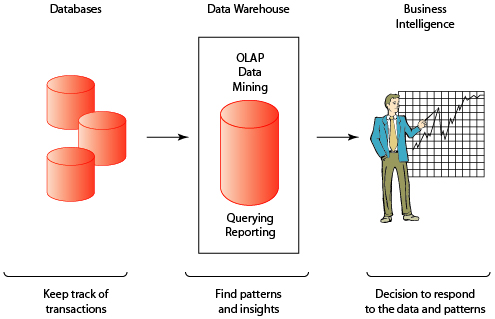| Section 6.3: Bullet Text Study Guide |
Using Databases to Improve Business Performance and Decision-Making
Businesses use their databases to:
- Keep track of basic transactions
- Provide information that will help the company run the business more efficiently
- Help managers and employees make better decisions
- Data warehouse: a database that stores current and historical data from core operational transactional systems for use in management analysis, but this data cannot be altered.
- Data mart: A subset of a data warehouse in which a summarized or highly focused portion of the organization's data is placed in a separate database for a specific population of users.
- Business intelligence (BI) tools: Data analysis tools used for consolidating, analyzing, and accessing vast stores of data to help in decision making, such as software for database query and reporting, tools for multidimensional data analysis (online analytical processing), and data mining.
 |
|
 |
|
Figure 6-15
 |
|
- Associations
- Sequences
- Classifications
- Clustering
- Forecasting
Predictive analysis uses data mining techniques, historical data, and assumptions about future conditions to predict outcomes of events, such as the probability a customer will respond to an offer or purchase a specific product.
Databases can be linked to the Web by using middleware software products, allowing users or clients to access corporate data through a Web browser interface. Such software might consist of an application server, a custom software program, or CGI (common gateway interface) scripts. In a client/server environment, the DBMS might reside on a special dedicated computer called a database server. Web interfaces are easy to use and require few or no changes to the internal database.
Figure 6-16

FIGURE 6-16 LINKING INTERNAL DATABASES TO THE WEB
Users access an organizationís internal database through the Web using their desktop PCs and Web
browser software.